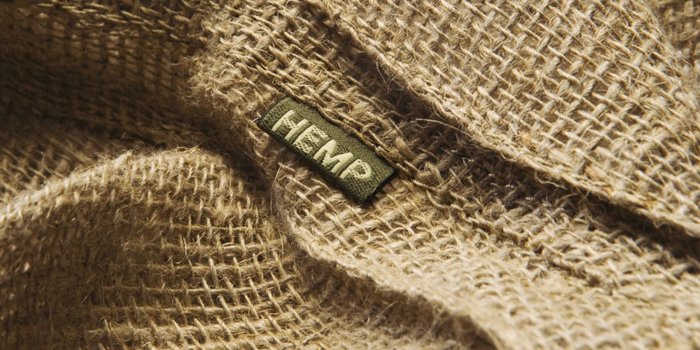Today, the U.S. is the world’s largest consumer of hemp products. But because of the federal prohibition imposed on cannabis and hemp, the U.S. is importing an estimated $100 million of hemp products each year.
That $100 million could soon be going back to American farmers and businesses, thanks to the recent introduction of the Hemp Farming Act of 2018 by Senate Majority Leader Mitch McConnell (R-KY). The bill, announced by McConnell and supported by a bipartisan group of senators, would “legalize hemp as an agricultural commodity and remove it from the list of controlled substances.”
This isn’t the first time McConnell or one of his colleagues has introduced such a bill. Actually, it’s the sixth — similar bills were introduced in 2005, 2007, 2009, 2013 and most recently 2015, only to be stalled each time in congressional committees that couldn’t see the difference between hemp and marijuana (or choose not to). This bill has a real chance of finally passing because of its potential for job creation and economic growth.
But why is hemp illegal in the first place? After all, America was built on hemp, an industrial crop which contains tiny amounts of THC, the chemical compound in cannabis that produces psychoactive effects. Several Founding Fathers grew hemp. Cultivation of hemp was mandated by law in the Massachusetts, Virginia and Connecticut colonies. Beginning in 1631, hemp was legal tender for paying taxes in many of the American colonies and remained so for state taxes until the early 1800s.
In 1937, federal prohibition of cannabis as we know it today began with the Marihuana Tax Act. Some believe that the anti-cannabis campaign was a joint effort by Andrew Mellon, William Randolph Hearst and Pierre Du Pont to protect their business interests in petrochemicals, paper, cotton and nylon, all of which faced serious competition from hemp alternatives. Others believe that the crusade against cannabis was fueled by racism and the desire to demonize Mexican immigrants. In either case, the plant should never have been outlawed.
By virtually every measure, prohibition of cannabis with high THC commonly known as marijuana and the variant with no recreational drug potential commonly known as hemp has cost the U.S. economy billions of dollars in missed business opportunities and wasted resources spent unsuccessfully fighting the so-called war on drugs.
In 1938, Popular Mechanics called hemp the billion-dollar crop. That’s about $17 billion of purchasing power today Resuming cultivation of hemp, America’s original cash crop, is a multibillion-dollar opportunity. You can bet entrepreneurs will be lining up. Here are some business opportunities associated with each part of the plant:
Hemp seeds
Hemp seeds may very well be the world’s first, and perhaps, best superfood. They provide up to 75 percent more protein than a similar amount of flax or chia seeds and contain all 20 amino acids. They’re filled with healthy fatty acids including omega-3 and omega-6. They’re also high in fiber, iron, phosphorus, potassium, calcium, zinc, vitamin E and magnesium — basically everything you need for a nutritious meal or snack.
It didn’t take long after U.S. consumers accepted kale as a superfood for the leafy green to take off. The same thing could easily happen to hemp seeds once more American farmers are allowed to cultivate and sell the crop. For perspective on the potential business opportunity, consider that Canadian farmers exported $45 million worth of hemp seed to the U.S. in 2016, making as much as $300 per acre, per season, farming industrial hemp. That’s five to 10 times as much as what our farmers in the Midwest are currently making for growing GMO wheat, corn and soy.
Related: Cannabis Medicinals Sales Expected to Reach $2 Billion by 2020
Hemp oil
Hemp oil is quickly becoming a commonly used ingredient in many cosmetics such as body lotions, soaps and shampoos. Even modest daily usage of hemp oil, whether it is ingested or applied to the skin, has been shown to lead to improvements in skin quality, stronger fingernails and even thicker hair. Hemp oil that is full of cannabidiol (CBD), a cannabinoid with neuroprotectant, antioxidant and other therapeutic qualities, generated $130 million in sales in 2016 and is projected to reach $350 million by 2020.
Related: Can Marijuana Replace Lost Steel Jobs? Pennsylvania Town Has High Hopes.
Fabrics and bioplastics
Bast is the outer fiber of the hemp stalk, and just about anything can be made from it — clothing, rope, rugs or plastic. It also blends well with cotton, silk, rayon, linen, wool and other fibers, which makes it both versatile and recyclable. Henry Ford once constructed a hemp plastic car that ran on hemp fuel. It was lighter than steel, but 10 times as resistant to breaking. Hemp fibers can also be used to make paper that is stronger than most of today’s paper while using a method that is more environmentally friendly than the traditional chemical-intensive process of taking wood and turning it into pulp.
Building materials
The inner fibers of the hemp stalk, called hurds, are known for their low density and high absorbency, which means they can be mixed with plaster or lime to make cheap and efficient building materials. This absorbency also makes it a great bed or surface for animals that minimizes dust, fungal spores and odors. Compared to concrete, hempcrete weighs about 90 percent less, uses significantly fewer petrochemicals, is virtually fireproof and, unlike concrete, allows moisture to pass through, reducing mold and mildew problems. In terms of sustainability, hempcrete sequesters carbon, whereas the cement industry is one of the world’s leading producers of CO2.
Related: 9 Business Ideas for People Looking to Cash in on the Marijuana Boom
Soil decontamination
A growing body of evidence suggests that hemp roots can remove toxins from soil and water better than practically any other plant. Hemp has been proven to absorb heavy metals from soil, including zinc, cadmium, lead and arsenic. Hemp has been used to detoxify the soil around the site of the Chernobyl nuclear disaster. Hemp could help address climate change, since it absorbs four times more carbon dioxide than trees while growing in just a fraction of the time.
Certainly, there is no shortage of opportunities to commercialize hemp. But until hemp is treated as an industrial crop that can grow freely, businesses won’t thrive. Many states have already taken steps to legalize and jump-start their local hemp economies, but the industry won’t scale until the federal government passes legislation that protects farmers and entrepreneurs from archaic and nonsensical narcotics regulations. Until then, this is a great time for entrepreneurs to start planting the seeds of their hemp ventures.



